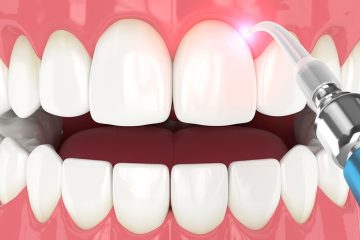Post Preview
Table of Contents:
- Introduction to Dental Insurance Costs
- Factors Influencing Dental Insurance Costs
- Types of Dental Plans
- Cost-Benefit Analysis
- Strategies to Manage Dental Insurance Costs
- The Role of Preventive Care
- Educating Employees about Dental Plans
- FAQs on Dental Insurance Costs
Introduction to Dental Insurance Costs
Dental insurance is a crucial employee benefit that often doesn’t get the attention it deserves. Business owners need to be well-informed about the complexities of dental insurance costs to manage expenses effectively while providing their employees valuable benefits. To compare dental plans is a vital step in understanding what suits the company’s needs best without overstretching the budget.
With a plethora of plans available, the cost can vary significantly. Company size, employee demographics, and chosen coverage significantly determine the total expenditure. Awareness of these factors and how they impact overall expenses can guide better decision-making and strategy formation.
Factors Influencing Dental Insurance Costs
Several elements influence employers’ dental insurance costs. These factors include:
- Company Size: Larger companies often have more negotiating power regarding premium rates due to the volume of employees covered. A bigger workforce also spreads out the risk, possibly lowering individual premiums.
- Geographical Location: Due to differences in dental care expenses, costs can vary significantly by region. Metropolitan areas might have higher costs than rural locations, so it’s essential to factor in local economic conditions.
- Employee Demographics: The age and overall health profiles of employees can impact premiums. Younger and healthier employees typically mean lower costs since they are less likely to require extensive dental work.
- Type of Coverage: Comprehensive plans with extensive coverage will generally be more expensive than basic plans. The choice between HMO, PPO, indemnity plans, or discount plans will directly affect costs.
Types of Dental Plans
Understanding the various types of dental plans can help business owners make informed decisions:
- HMO: These plans often have lower premiums and out-of-pocket costs but limit choices to a network of providers. This might be a cost-effective option for businesses looking for essential coverage.
- PPO: This type balances cost and provider choice, allowing visits to out-of-network providers at a higher cost. PPO plans are ideal for companies wanting flexibility for their employees.
- Indemnity Plans: These traditional policies provide a maximum choice of dentists but at a higher cost. They might suit businesses with fewer cost constraints but require broader coverage.
- Discount Plans: These plans offer reduced rates for services from participating dentists. They are ideal for cost-conscious employers needing basic coverage without high premiums.
Cost-Benefit Analysis
Evaluating the costs against the benefits is critical for any business owner. Conducting a cost-benefit analysis helps determine the value of investment in dental insurance. Considerations should include:
- Preventive Care Savings: Regular check-ups can prevent more serious dental issues, which translates to long-term cost savings. The money spent on preventive care might be a fraction of the money spent treating dental crises.
- Employee Satisfaction: Offering dental benefits can improve job satisfaction and reduce turnover rates. Employees who feel cared for are more likely to stay with the company, reducing recruitment and training costs.
- Health Outcomes: Good dental health is tied to overall well-being, potentially decreasing sick days and increasing productivity. Healthier employees can focus better on their tasks, leading to improved business outcomes.
By weighing these factors, business owners can decide if the benefits justify the costs, allowing them to make informed decisions that align with their financial capabilities and employee needs.
Strategies to Manage Dental Insurance Costs
Effective strategies can help manage dental insurance costs without compromising the quality of the benefits provided:
- Negotiating with Providers: Engage in discussions with multiple providers to find the best deals. Competitive shopping can lead to better rates and more favorable terms.
- Offering Tiered Plans: Provide different levels of coverage to fit various budgets and needs. This allows employees to choose a plan that best fits their personal and family requirements, possibly reducing overall costs.
- Encouraging Preventive Care: Promote regular check-ups and cleanings to avoid costly procedures in the future. Encourage your employees to take advantage of preventive care included in their plans to maintain dental health and prevent more serious conditions.
Implementing such strategies can result in substantial savings while ensuring employees receive dental care to stay healthy and productive.
The Role of Preventive Care
Preventive care is a cornerstone in reducing overall dental insurance costs. Regular dental check-ups and cleanings can prevent more severe and expensive dental procedures. Encouraging employees to adhere to preventive care can have long-term benefits.
According to Healthline, preventive dentistry saves costs and ensures better dental health for employees, which benefits both employees and employers. Preventive care practices such as regular brushing and flossing, combined with professional cleanings, help identify minor dental issues before they become significant problems.
Educating Employees about Dental Plans
Educating employees about the available dental plans can significantly enhance their decision-making process. Providing clear, concise information about plans and coverage options enables employees to choose plans that best meet their needs, leading to higher satisfaction rates.
Resources from reputable organizations like the American Dental Association can be instrumental in these educational efforts. Employers should ensure employees understand what each plan covers and the importance of regular preventive care. Employers can help employees make the best choices for their dental health and overall well-being by holding informational sessions or providing literature on the subject.
FAQs on Dental Insurance Costs
- What factors influence dental insurance costs? Factors include company size, geographical location, employee demographics, and type of coverage. Understanding these elements can help businesses anticipate costs and budget accordingly.
- Are there cost-effective dental plans for small businesses? Yes, small businesses can find cost-effective plans by comparing options and possibly opting for HMO or discount plans. Each business should evaluate its specific needs and select a plan with the best coverage and cost.
- How can preventive care affect dental insurance costs? Regular preventive care can significantly reduce the need for expensive procedures, thereby lowering overall costs. Encouraging employees to take advantage of these services is crucial for maintaining dental health and controlling costs.
- What are the common types of dental insurance plans? Common types include HMO, PPO, indemnity plans, and discount plans. Each type has its cost structure and benefits, so businesses should carefully consider which aligns best with their objectives.
- How can educating employees help in managing dental insurance costs? Educated employees will likely choose plans that fit their needs and utilize preventive care, leading to lower costs and higher satisfaction. Providing clear information and resources can empower employees to make informed decisions about their dental care.



